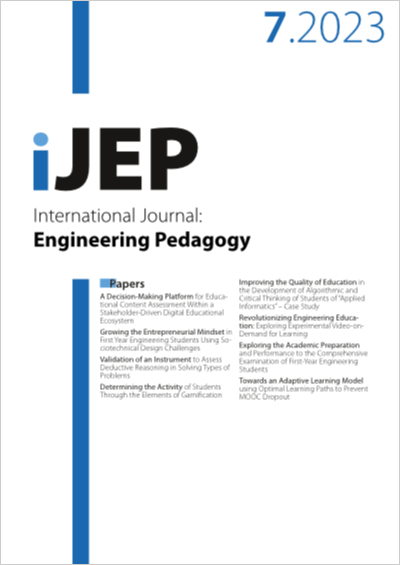Determining the Activity of Students Through the Elements of Gamification
DOI:
https://doi.org/10.3991/ijep.v13i7.41885Keywords:
gamification, education, learners, activity, motivation, educational process, gamified educational resourcesAbstract
This study aimed to assess the impact of gamified educational resources on students’ motivation to learn the Python programming language. The study utilized the CheckiO gaming platform to diagnose the needs and motivations of students in developing knowledge, skills, and abilities related to the use of gamified educational resources. A total of 83 students from a university in Kazakhstan participated in the study, with 45 students in the experimental group and 38 students in the control group. The results showed a significant difference between the initial and final levels of motivation for certain indicators in the experimental group, whereas no such difference was observed in the control group. Specifically, the number of students with a low level of motivation decreased, while the number of students with a high level of motivation increased in the experimental group. The evaluation of student performance in the learning process was based on the completion of tasks, where an incorrect execution resulted in the report value not being displayed and an inability to progress to the next stage. Our study suggests that the incorporation of gamified educational resources has a significant impact on students’ motivation to learn, which can lead to improved academic performance and higher levels of engagement in the learning process.
Downloads
Published
How to Cite
Issue
Section
License
Copyright (c) 2023 PhD Candidate Tokzhigitova, Associate Professor Yermaganbetova, Associate Professor Tokzhigitova

This work is licensed under a Creative Commons Attribution 4.0 International License.



